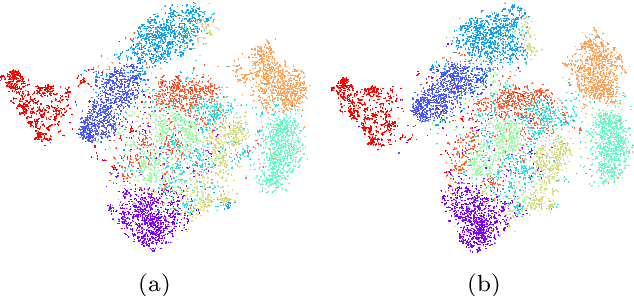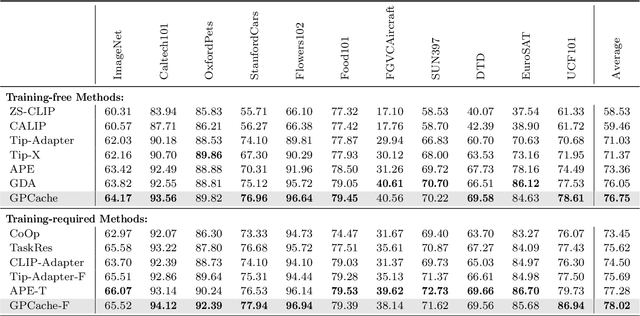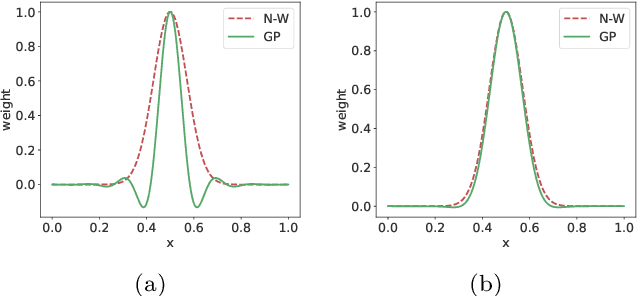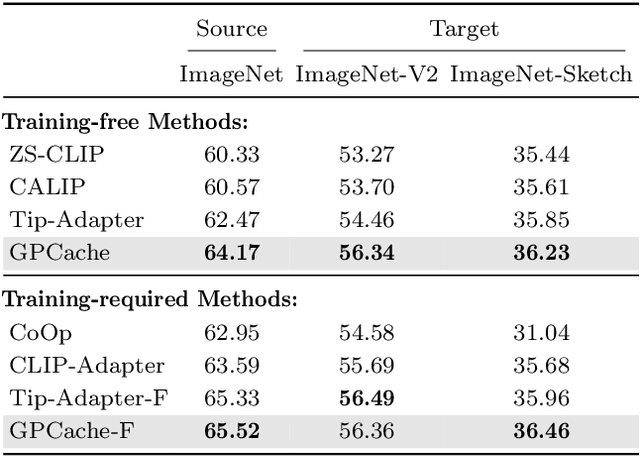Gaofeng Meng
MLLM-CL: Continual Learning for Multimodal Large Language Models
Jun 05, 2025Abstract:Recent Multimodal Large Language Models (MLLMs) excel in vision-language understanding but face challenges in adapting to dynamic real-world scenarios that require continuous integration of new knowledge and skills. While continual learning (CL) offers a potential solution, existing benchmarks and methods suffer from critical limitations. In this paper, we introduce MLLM-CL, a novel benchmark encompassing domain and ability continual learning, where the former focuses on independently and identically distributed (IID) evaluation across evolving mainstream domains, whereas the latter evaluates on non-IID scenarios with emerging model ability. Methodologically, we propose preventing catastrophic interference through parameter isolation, along with an MLLM-based routing mechanism. Extensive experiments demonstrate that our approach can integrate domain-specific knowledge and functional abilities with minimal forgetting, significantly outperforming existing methods.
Semi-parametric Memory Consolidation: Towards Brain-like Deep Continual Learning
Apr 20, 2025Abstract:Humans and most animals inherently possess a distinctive capacity to continually acquire novel experiences and accumulate worldly knowledge over time. This ability, termed continual learning, is also critical for deep neural networks (DNNs) to adapt to the dynamically evolving world in open environments. However, DNNs notoriously suffer from catastrophic forgetting of previously learned knowledge when trained on sequential tasks. In this work, inspired by the interactive human memory and learning system, we propose a novel biomimetic continual learning framework that integrates semi-parametric memory and the wake-sleep consolidation mechanism. For the first time, our method enables deep neural networks to retain high performance on novel tasks while maintaining prior knowledge in real-world challenging continual learning scenarios, e.g., class-incremental learning on ImageNet. This study demonstrates that emulating biological intelligence provides a promising path to enable deep neural networks with continual learning capabilities.
Pareto Continual Learning: Preference-Conditioned Learning and Adaption for Dynamic Stability-Plasticity Trade-off
Mar 30, 2025Abstract:Continual learning aims to learn multiple tasks sequentially. A key challenge in continual learning is balancing between two objectives: retaining knowledge from old tasks (stability) and adapting to new tasks (plasticity). Experience replay methods, which store and replay past data alongside new data, have become a widely adopted approach to mitigate catastrophic forgetting. However, these methods neglect the dynamic nature of the stability-plasticity trade-off and aim to find a fixed and unchanging balance, resulting in suboptimal adaptation during training and inference. In this paper, we propose Pareto Continual Learning (ParetoCL), a novel framework that reformulates the stability-plasticity trade-off in continual learning as a multi-objective optimization (MOO) problem. ParetoCL introduces a preference-conditioned model to efficiently learn a set of Pareto optimal solutions representing different trade-offs and enables dynamic adaptation during inference. From a generalization perspective, ParetoCL can be seen as an objective augmentation approach that learns from different objective combinations of stability and plasticity. Extensive experiments across multiple datasets and settings demonstrate that ParetoCL outperforms state-of-the-art methods and adapts to diverse continual learning scenarios.
Practical Continual Forgetting for Pre-trained Vision Models
Jan 16, 2025Abstract:For privacy and security concerns, the need to erase unwanted information from pre-trained vision models is becoming evident nowadays. In real-world scenarios, erasure requests originate at any time from both users and model owners, and these requests usually form a sequence. Therefore, under such a setting, selective information is expected to be continuously removed from a pre-trained model while maintaining the rest. We define this problem as continual forgetting and identify three key challenges. (i) For unwanted knowledge, efficient and effective deleting is crucial. (ii) For remaining knowledge, the impact brought by the forgetting procedure should be minimal. (iii) In real-world scenarios, the training samples may be scarce or partially missing during the process of forgetting. To address them, we first propose Group Sparse LoRA (GS-LoRA). Specifically, towards (i), we introduce LoRA modules to fine-tune the FFN layers in Transformer blocks for each forgetting task independently, and towards (ii), a simple group sparse regularization is adopted, enabling automatic selection of specific LoRA groups and zeroing out the others. To further extend GS-LoRA to more practical scenarios, we incorporate prototype information as additional supervision and introduce a more practical approach, GS-LoRA++. For each forgotten class, we move the logits away from its original prototype. For the remaining classes, we pull the logits closer to their respective prototypes. We conduct extensive experiments on face recognition, object detection and image classification and demonstrate that our method manages to forget specific classes with minimal impact on other classes. Codes have been released on https://github.com/bjzhb666/GS-LoRA.
Rethinking Comprehensive Benchmark for Chart Understanding: A Perspective from Scientific Literature
Dec 11, 2024



Abstract:Scientific Literature charts often contain complex visual elements, including multi-plot figures, flowcharts, structural diagrams and etc. Evaluating multimodal models using these authentic and intricate charts provides a more accurate assessment of their understanding abilities. However, existing benchmarks face limitations: a narrow range of chart types, overly simplistic template-based questions and visual elements, and inadequate evaluation methods. These shortcomings lead to inflated performance scores that fail to hold up when models encounter real-world scientific charts. To address these challenges, we introduce a new benchmark, Scientific Chart QA (SCI-CQA), which emphasizes flowcharts as a critical yet often overlooked category. To overcome the limitations of chart variety and simplistic visual elements, we curated a dataset of 202,760 image-text pairs from 15 top-tier computer science conferences papers over the past decade. After rigorous filtering, we refined this to 37,607 high-quality charts with contextual information. SCI-CQA also introduces a novel evaluation framework inspired by human exams, encompassing 5,629 carefully curated questions, both objective and open-ended. Additionally, we propose an efficient annotation pipeline that significantly reduces data annotation costs. Finally, we explore context-based chart understanding, highlighting the crucial role of contextual information in solving previously unanswerable questions.
OpenSatMap: A Fine-grained High-resolution Satellite Dataset for Large-scale Map Construction
Oct 30, 2024Abstract:In this paper, we propose OpenSatMap, a fine-grained, high-resolution satellite dataset for large-scale map construction. Map construction is one of the foundations of the transportation industry, such as navigation and autonomous driving. Extracting road structures from satellite images is an efficient way to construct large-scale maps. However, existing satellite datasets provide only coarse semantic-level labels with a relatively low resolution (up to level 19), impeding the advancement of this field. In contrast, the proposed OpenSatMap (1) has fine-grained instance-level annotations; (2) consists of high-resolution images (level 20); (3) is currently the largest one of its kind; (4) collects data with high diversity. Moreover, OpenSatMap covers and aligns with the popular nuScenes dataset and Argoverse 2 dataset to potentially advance autonomous driving technologies. By publishing and maintaining the dataset, we provide a high-quality benchmark for satellite-based map construction and downstream tasks like autonomous driving.
A Survey of Low-shot Vision-Language Model Adaptation via Representer Theorem
Oct 15, 2024



Abstract:The advent of pre-trained vision-language foundation models has revolutionized the field of zero/few-shot (i.e., low-shot) image recognition. The key challenge to address under the condition of limited training data is how to fine-tune pre-trained vision-language models in a parameter-efficient manner. Previously, numerous approaches tackling this challenge have been proposed. Meantime, a few survey papers are also published to summarize these works. However, there still lacks a unified computational framework to integrate existing methods together, identify their nature and support in-depth comparison. As such, this survey paper first proposes a unified computational framework from the perspective of Representer Theorem and then derives many of the existing methods by specializing this framework. Thereafter, a comparative analysis is conducted to uncover the differences and relationships between existing methods. Based on the analyses, some possible variants to improve the existing works are presented. As a demonstration, we extend existing methods by modeling inter-class correlation between representers in reproducing kernel Hilbert space (RKHS), which is implemented by exploiting the closed-form solution of kernel ridge regression. Extensive experiments on 11 datasets are conducted to validate the effectiveness of this method. Toward the end of this paper, we discuss the limitations and provide further research directions.
Calibrated Cache Model for Few-Shot Vision-Language Model Adaptation
Oct 11, 2024



Abstract:Cache-based approaches stand out as both effective and efficient for adapting vision-language models (VLMs). Nonetheless, the existing cache model overlooks three crucial aspects. 1) Pre-trained VLMs are mainly optimized for image-text similarity, neglecting the importance of image-image similarity, leading to a gap between pre-training and adaptation. 2) The current cache model is based on the Nadaraya-Watson (N-W) estimator, which disregards the intricate relationships among training samples while constructing weight function. 3) Under the condition of limited samples, the logits generated by cache model are of high uncertainty, directly using these logits without accounting for the confidence could be problematic. This work presents three calibration modules aimed at addressing the above challenges. Similarity Calibration refines the image-image similarity by using unlabeled images. We add a learnable projection layer with residual connection on top of the pre-trained image encoder of CLIP and optimize the parameters by minimizing self-supervised contrastive loss. Weight Calibration introduces a precision matrix into the weight function to adequately model the relation between training samples, transforming the existing cache model to a Gaussian Process (GP) regressor, which could be more accurate than N-W estimator. Confidence Calibration leverages the predictive variances computed by GP Regression to dynamically re-scale the logits of cache model, ensuring that the cache model's outputs are appropriately adjusted based on their confidence levels. Besides, to reduce the high complexity of GPs, we further propose a group-based learning strategy. Integrating the above designs, we propose both training-free and training-required variants. Extensive experiments on 11 few-shot classification datasets validate that the proposed methods can achieve state-of-the-art performance.
Force Sensing Guided Artery-Vein Segmentation via Sequential Ultrasound Images
Jul 31, 2024Abstract:Accurate identification of arteries and veins in ultrasound images is crucial for vascular examinations and interventions in robotics-assisted surgeries. However, current methods for ultrasound vessel segmentation face challenges in distinguishing between arteries and veins due to their morphological similarities. To address this challenge, this study introduces a novel force sensing guided segmentation approach to enhance artery-vein segmentation accuracy by leveraging their distinct deformability. Our proposed method utilizes force magnitude to identify key frames with the most significant vascular deformation in a sequence of ultrasound images. These key frames are then integrated with the current frame through attention mechanisms, with weights assigned in accordance with force magnitude. Our proposed force sensing guided framework can be seamlessly integrated into various segmentation networks and achieves significant performance improvements in multiple U-shaped networks such as U-Net, Swin-unet and Transunet. Furthermore, we contribute the first multimodal ultrasound artery-vein segmentation dataset, Mus-V, which encompasses both force and image data simultaneously. The dataset comprises 3114 ultrasound images of carotid and femoral vessels extracted from 105 videos, with corresponding force data recorded by the force sensor mounted on the US probe. Our code and dataset will be publicly available.
AddressCLIP: Empowering Vision-Language Models for City-wide Image Address Localization
Jul 11, 2024



Abstract:In this study, we introduce a new problem raised by social media and photojournalism, named Image Address Localization (IAL), which aims to predict the readable textual address where an image was taken. Existing two-stage approaches involve predicting geographical coordinates and converting them into human-readable addresses, which can lead to ambiguity and be resource-intensive. In contrast, we propose an end-to-end framework named AddressCLIP to solve the problem with more semantics, consisting of two key ingredients: i) image-text alignment to align images with addresses and scene captions by contrastive learning, and ii) image-geography matching to constrain image features with the spatial distance in terms of manifold learning. Additionally, we have built three datasets from Pittsburgh and San Francisco on different scales specifically for the IAL problem. Experiments demonstrate that our approach achieves compelling performance on the proposed datasets and outperforms representative transfer learning methods for vision-language models. Furthermore, extensive ablations and visualizations exhibit the effectiveness of the proposed method. The datasets and source code are available at https://github.com/xsx1001/AddressCLIP.
 Add to Chrome
Add to Chrome Add to Firefox
Add to Firefox Add to Edge
Add to Edge